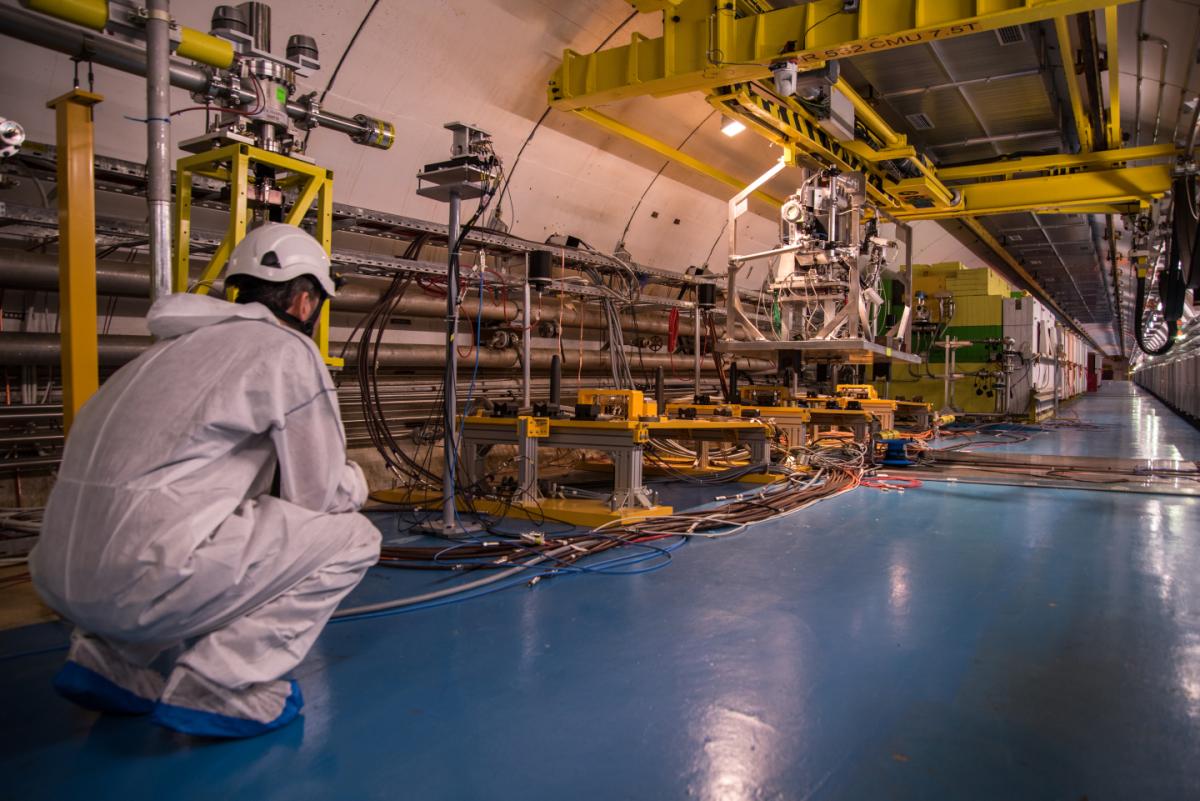What happens to materials when they are subjected to high-energy, high-density, proton beams? How do materials, detectors and accelerator devices behave when they experience extreme conditions of temperature, compressive-to-tensile stresses and internal damage induced by high powered accelerator beams? What are the damage thresholds for superconducting materials after impact with LHC-type beams? HiRadMat, a facility designed for high-energy beam experiments for accelerator components, at CERN, helps experimenters answer these questions, and more.
The effects of high-energy proton beams on the properties of materials can potentially be catastrophic. Metal objects, for example, can experience structural and mechanical defects when exposed to such beams, which, if used as a selected material for nuclear reactors or high energy physics experiments, could result in significant operational complications and malfunctions. Having the capability to investigate such materials, devices or components in a safe and controlled environment is needed to ensure no unexpected problems arise during the final use of a selected material.
HiRadMat, an acronym for High Radiation to Materials, provides exactly this environment to researchers. At the facility, different materials can be exposed to high-energy, high-density, pulsed proton and ion beams to investigate the behavioural and damage limits of, for example, accelerator components and electronics for the LHC, or evaluate different material options for R&D prototypes. Since its commissioning in 2011, HiRadMat has remained a facility in high demand, providing a wide range of experiments access to its unique capabilities.
In the spirit of international collaboration and an open exchange of ideas, HiRadMat supports researchers from around the globe for a range of scientific purposes. It is part of the ARIES project, which aims to develop European particle accelerator infrastructures and also provides support for researchers to travel to and use the facility, via transnational access procedures.

An experimental set-up in HiRadMat Tunnel (Image: CERN)
HiRadMat uses a proton beam extracted directly from the Super Proton Synchrotron (SPS), from the TI2 injection line to the LHC [1,2]. A proton beam with a momentum of 440 GeV/c, providing a maximum pulsed energy of 2.4 MJ, is provided and comparable to those extracted to the LHC. At HiRadMat pulsed proton beams from 1 bunch to 288 bunches per pulse, at a maximum intensity of 1.2x1011 protons per bunch (equivalent ion beams available), are provided.
The facility contains three experimental tables. A Beam Observation TV Monitor (BTV) has been installed upstream of the experimental set-ups and provides all users with reliable and comparable beam information in real-time, i.e. beam position, beam stability and beam spot size during beam operation. Different optics are available depending on the location of the experiment, but a standard 1σ r.m.s. beam radius of 0.5 – 2 mm is offered, with others available upon discussion. Further details on the beam operation of HiRadMat can be found in the literature by Charitonidis et al. [3]
Since HiRadMat took its first proton beam in 2012, it has continued to provide beam to a variety of projects, including studies into novel materials for collimators, superconducting materials and detector devices. It has continued to develop as a facility with improvements to equipment available for all users as well as an increase of monitoring systems to ensure smooth operation during beam-time. HiRadMat also contains an additional area providing improved shielding for electronics required for experiments, a surface laboratory and a dedicated control room.
If HiRadMat sounds like the perfect facility to test your materials, devices and products, please contact the HiRadMat team directly.
[1] I. Efthymiopoulos et al. “HiRadMat: A New Irradiation Facility for Material Testing at CERN”, Proceedings IPAC, 2011: 1665-1667.
[2] C. Hessler et al. “Beam Line Design for the CERN HiRadMat Test Facility”, Proceedings PAC, 2009: 3796-3798.
[3] N. Charitonidis et al. “HiRadMat: A high-energy, pulsed beam, material irradiation facility”, 4th International Conference on Advancements in Nuclear Instrumentation Measurement Methods and their Applications, Lisbon, 2015: 1-3.


